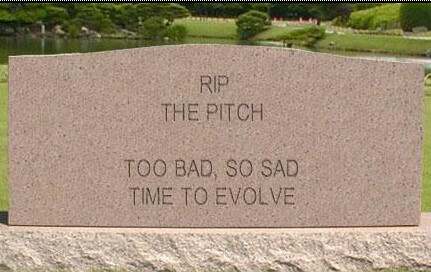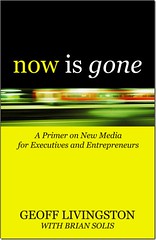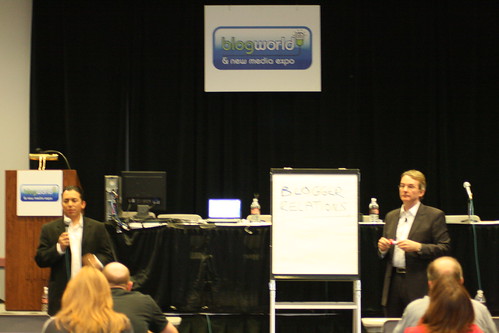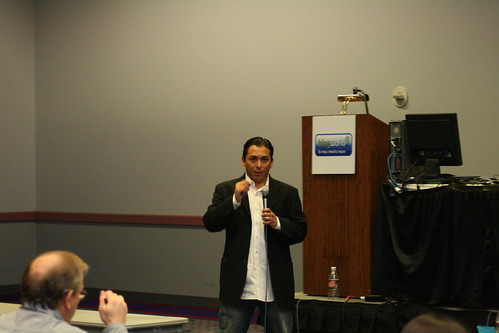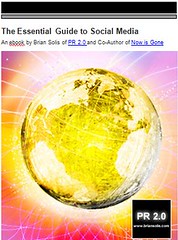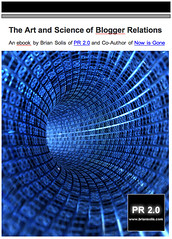Ladies and Gentlemen of the Jury, The Social Media Release is not a Meatball Sundae

Ladies and gentlemen of the jury, you have been presented a case as to whether or not the Social Media Release is nothing more than a Meatball Sundae - a term created by Seth Godin to visualize the mixing of two great ideas into something not so tasty.
It's cute to say the least, but unfortunately, cute doesn't cut it.
Greg Jarboe, the prosecutor in this case, is someone whose work in SEO PR has helped evolve Public Relations into the Internet era, and we applaud his efforts.
Of everyone I expected to not only understand the relevance of the Social Media Release, but also have the vision to see its potential and practical use, Greg Jarboe would be on the top of that list. After all, Mr. Jarboe is one of the early champions for optimizing press releases for search engines (SEO), a practice which even after 10 years in play is still not widely accepted, understood, or utilized - but it should be.
Even though people don't necessarily know about it or understand how it works and why, it doesn't take away from its innovation and benefits.
The same is true for Social Media Releases.
So, I stand before you disappointed to say the least, but also hopeful.
Mr. Jarboe presents his "empirical" evidence that will supposedly prove that SMRs are the unfortunate result of mixing two great ideas, but I will counter that his arguments don't speak for the greater communities of journalists, PR professionals, and most importantly, customers. He merely presents a Meatball Sundae of his own, which combines misinterpreted statements along with the words of people who don't practice PR as their main profession.
The Social Media Release is nimble, scalable, and customizable. It can be written for journalists, bloggers, and/or for customers, and is simply rooted in the social tools and channels that help socialize the content for discovery, interpretation, and sharing. It's something that combines the best of traditional, new and social media and helps package a story in a way that works for different writers and users.
For example, Mr. Jarboe presents Exhibit A, an article that Todd Defren, the originator of the first proposed SMR template, and I wrote (or as he says, confessed) to help people understand what an SMR is, isn't and what it could be. He falsely assumes that we said Social Media Releases are not trackable within blog search engines, such as Technorati or Google Blog Search, even if we embed Technorati tags. Therefore he concludes that if SMRs aren't discoverable within blog search engines, and they don't show up in traditional search engines, then they are useless.
Well if that were true, then there would be no case whatsoever.
Instead Greg probably only skimmed through the article and missed the important context of what Mr. Defren and I were presenting.
The FACT is that SMRs are not discoverable in blog search engines when they are distributed through purported "social" channels using traditional wire services. We were simply calling out that just because you pay monety to distribute a release that looks like the SMR template, it doesn't carry with it the social attributes that would make it discoverable within social channels, communities and networks, and thus, would be no more than a multimedia or new media release instead of an SMR, and probably not as effective as a well-written summary, press release or SEO release.
Traditional wire services still use traditional distribution methods to place press releases on the Web. Depending on key words, they will only show up in Google or Yahoo, and that is the point. Traditional search and Social search are not the same. So why would you place a Social release in a Traditional channel? It's SEO and SMO (Social Media Optimization).
Now, if you were to use a platform that is inherently social, such as a social network, blog, micromedia format, or a wiki, then you would have a much different result. In these cases, SMRs do appear in blog search engines. Just look at the example below of a very basic SMR we recently ran in addition to a traditional press release AND an SEO release. Each version was intended for different groups of people including journalists, bloggers and customers. In this case the SMR is the top search result in Technorati...by tags and by key words.

Mr. Jarboe, your exhibit A, which is supposed to provide empirical evidence, is far from reality.
In the traditional search world, numbers show that over 50% of customers are citing press releases as their number one source for news over traditional journals and news sites. Well, this is a huge boost for SEO press releases as they do appear in traditional search.
But what happens when traditional search gets augmented by blog or social search?
Until they're one in the same, there's still value in cultivating both strategies. And as I showed in the example above, you can push both SEO and SMO strategies to help customers discover information regardless of traditional or search mechanisms.
Oh wait. Yes. This is about bridging information between companies and customers, so therefore news and information isn't solely dependent on journalists and influencers to carry the relevant information forward. Hey, it's not just SMO, that's been the promise of SEO releases all along.
Now onto Mr. Jarboe's Exhibit B (don't worry, I won't respond to every piece of evidence in depth, as they're really is no need to address the points which can't even stand on their own.)
Exhibit B calls upon SEO guru Lee Odden, which refers to a post that claims submitting press releases to social sites such as digg is "social media suicide."
Well here's an interesting thing to think about. What if a Social Media Release didn't look or act like a traditional release? What if you couldn't tell an SMR apart from a story?
Sounds just like an SEO release but for Social Media right?
Exactly.
It's about the story you want to read, just using different channels and tools to intelligently and transparently broadcast it. The Social Media Releases I have experimented with look nothing like the original template, but they help tell a story in a BS-free format without all of the spintastic hype, usual leadership posturing, and self-congratulating comments.
If press releases weren't so powerful, then we wouldn't have that stat of over 50% of IT customers sourcing press releases as their main source of information. Nor would we have two-to three of the top wire distribution services listed as top sources in the Techmeme Top 100 Leaderboard.
And let me ask you this. How many times have you made the front page of digg?
Without revealing the secret sauce, or manipulation strategies like our over zealous friend did over at TechCrunch recently, digg and relevant social bookmarking sites have less to do with sources than they do with culture and the network that chooses to push something forward. Trust me when I say, you have to live it to believe it - especially when you want talk about it as if you've contributed to top stories day after day. For everyone else, Odden is right. Individual stories written by key journalists or bloggers can be more effective within social networks if it is carried forward strategically.
Exhibit C - D, whatever. Obviously there will people who don't get it and cry aloud about how change sucks. It's not about the people who decry something new, it's about the people who DO get it and push evolution forward.
Regardless of the very narrow history lesson provided in the prosection's case, the truth is that the majority or press releases are horrible and written for executives instead of press or customers. They're wrought with BS, messages, hyperbole, and Kool Aid.
Setting aside formats and debates over traditional media, SEO and SMO for a minute, the best thing about the SMR template is that it got us talking about how to make things better and how to write more relevant and compelling press releases for the people we want to read it.
Facts are facts. Resources are resources. Providing links to market information, feeds, relevant stories and supporting material, and the ability to save and share information within social networks is beneficial to those who need to write a story based on the information as well customers looking for direction.
Here's the bottom line. Social Media releases aren't supposed to cure the problems that face poorly written press releases, regardless of the technologies that create and broadcast them. Yes that includes Edelman's "story maker upper."
Bullshit in is still bullshit out.
If you are foolish enough to believe that one press release serves all of the people you're trying to reach, then perhaps you need to stand trial before any press release format.
I experiment every week with social tools and social releases in addition to the required and still relevant traditional campaigns that earn our keep. I can tell you that the results are staggering when you personalize information for specific groups of people and use distinct channels to reach each community, whether it's SEO, SMO, traditional or in Long Tail.

Yes it true.
I only propose that they stop talking and theorizing and get some real world experience in the realm of Social Media so we can discuss things as experienced, beaten, successful, and most-importantly, proven peers
I know, it's not a punishment if they learn and grow in the process. But, I'm OK with that...learning, listening, sharing, and evolving is the point here.
But, please, stop pretending to know what you're talking about when you haven't even experimented with the very things you bury without experience or intelligence.
Theory doesn't count here. Especially when we're already proving otherwise.
You're opinion will only count when, as they say in anthropology, you've "gone native" and come back to tell the story.
That's right, Social Media isn't SEO or traditional PR.
If you've learned anything about Social Media, then you will understand it's more aligned with sociology and anthropology than socialism.
If you wish to plead a case in front of your peers, then please call forth witnesses who have credible and legitimate experience in the field you're spotlighting. Just because you refer to bloggers or "social" experts doesn't mean they're experienced in PR or Social Media Releases. Not one person you called to testify has ever releases one, so all of their testimony should be stricken from the record.

Court adjourned.
An open invitation for others to response: Todd Defren, Chris Heuer, Shannon Whitley, Shel Holtz
Everything you ever wanted to know about Social Media Releases, but were afraid to ask
Connect with me on Twitter, Jaiku, Pownce or Facebook.
seth+godin smr smpr public+relations socialmediarelease social+media+release pr publicrelations media2.0 media+2.0 media 2.0 socialmedia social greg+jarboe seo smo search searchengineoptimization engine optimization meatball+sundae techmeme technorati case prosecutor defense experience pr2.0 pr+2.0 newpr communications marketing marcomm
